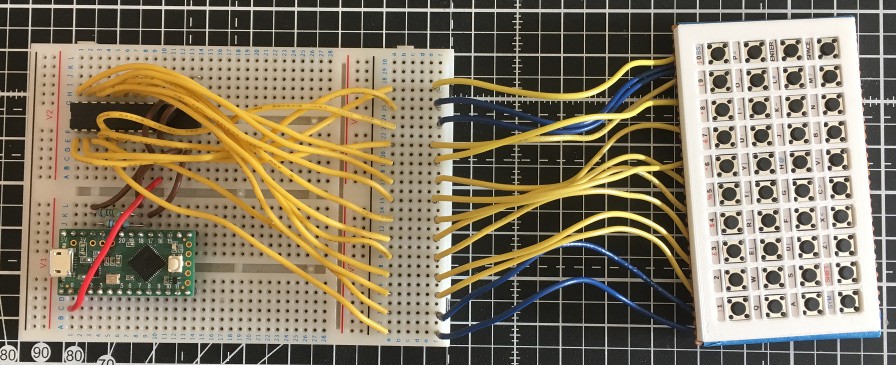My keyboard needs one GPIO pin for each row and column, so for a 10x4 layout that's 14 GPIOs. Most Arduino style boards can accommodate this, but it takes up most of the pins. Other types of board, such as ESP8266 and Raspberry PI, don't have nearly enough pins though. What to do? Use an IO expander chip of course! These types of chip provide a number of GPIO pins that the host accesses via a serial protocol, usually I2C or SPI. This means that the host only needs to support the relevant serial protocol which generally only requires 2-5 pins. You could also run other devices off the same serial bus without using any more pins.

Here I am using an MCP23017 IO Expander chip with a Teensy LC. The only other components needed are two 4.7KOhm resistors to pull up the signals on the I2C bus. I'll document this properly another time, but you can see from the picture above I'm only using a small number of pins on the Teensy, leaving most of them free for other things. Only minor changes are needed to the software, Adafruit produce a library for the 23017 which provides equivalents to the standard Arduino digitalRead()/digitalWrite().
The 23017 has 16 GPIOs, which means that I have two spare here which I could you to add more rows or columns. The chip also has three address pins which can be pulled high or low allowing for a up to eight chips on one I2C bus, giving a total of 128 GPIOs, more than enough for any thumb keyboard.
I'll release the software soon, including a version for ESP8266.
 David Boucher
David Boucher
Discussions
Become a Hackaday.io Member
Create an account to leave a comment. Already have an account? Log In.